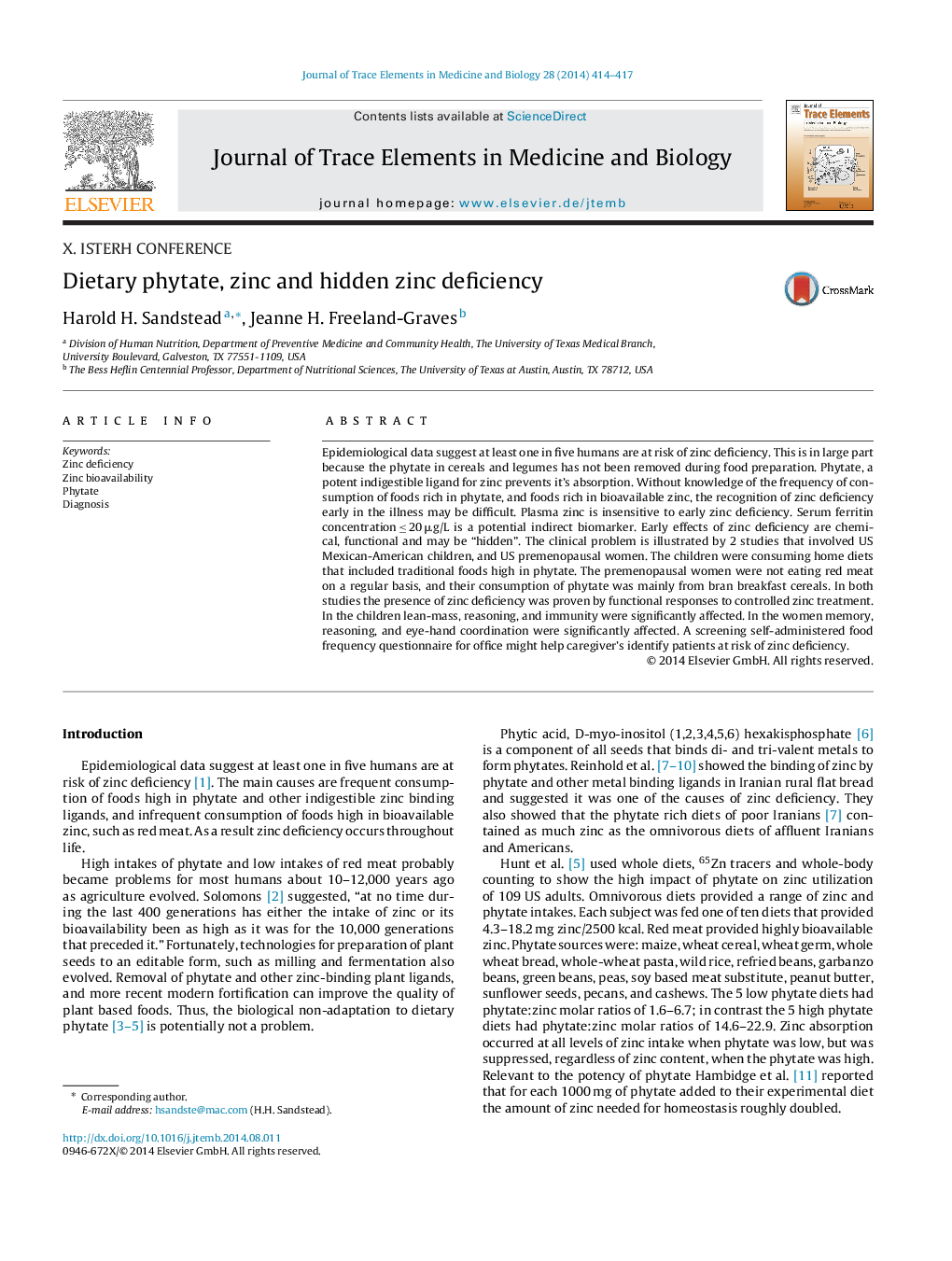| کد مقاله | کد نشریه | سال انتشار | مقاله انگلیسی | نسخه تمام متن |
|---|---|---|---|---|
| 1226457 | 968306 | 2014 | 4 صفحه PDF | دانلود رایگان |
Epidemiological data suggest at least one in five humans are at risk of zinc deficiency. This is in large part because the phytate in cereals and legumes has not been removed during food preparation. Phytate, a potent indigestible ligand for zinc prevents it's absorption. Without knowledge of the frequency of consumption of foods rich in phytate, and foods rich in bioavailable zinc, the recognition of zinc deficiency early in the illness may be difficult. Plasma zinc is insensitive to early zinc deficiency. Serum ferritin concentration ≤ 20 μg/L is a potential indirect biomarker. Early effects of zinc deficiency are chemical, functional and may be “hidden”. The clinical problem is illustrated by 2 studies that involved US Mexican-American children, and US premenopausal women. The children were consuming home diets that included traditional foods high in phytate. The premenopausal women were not eating red meat on a regular basis, and their consumption of phytate was mainly from bran breakfast cereals. In both studies the presence of zinc deficiency was proven by functional responses to controlled zinc treatment. In the children lean-mass, reasoning, and immunity were significantly affected. In the women memory, reasoning, and eye-hand coordination were significantly affected. A screening self-administered food frequency questionnaire for office might help caregiver's identify patients at risk of zinc deficiency.
Journal: Journal of Trace Elements in Medicine and Biology - Volume 28, Issue 4, October 2014, Pages 414–417
